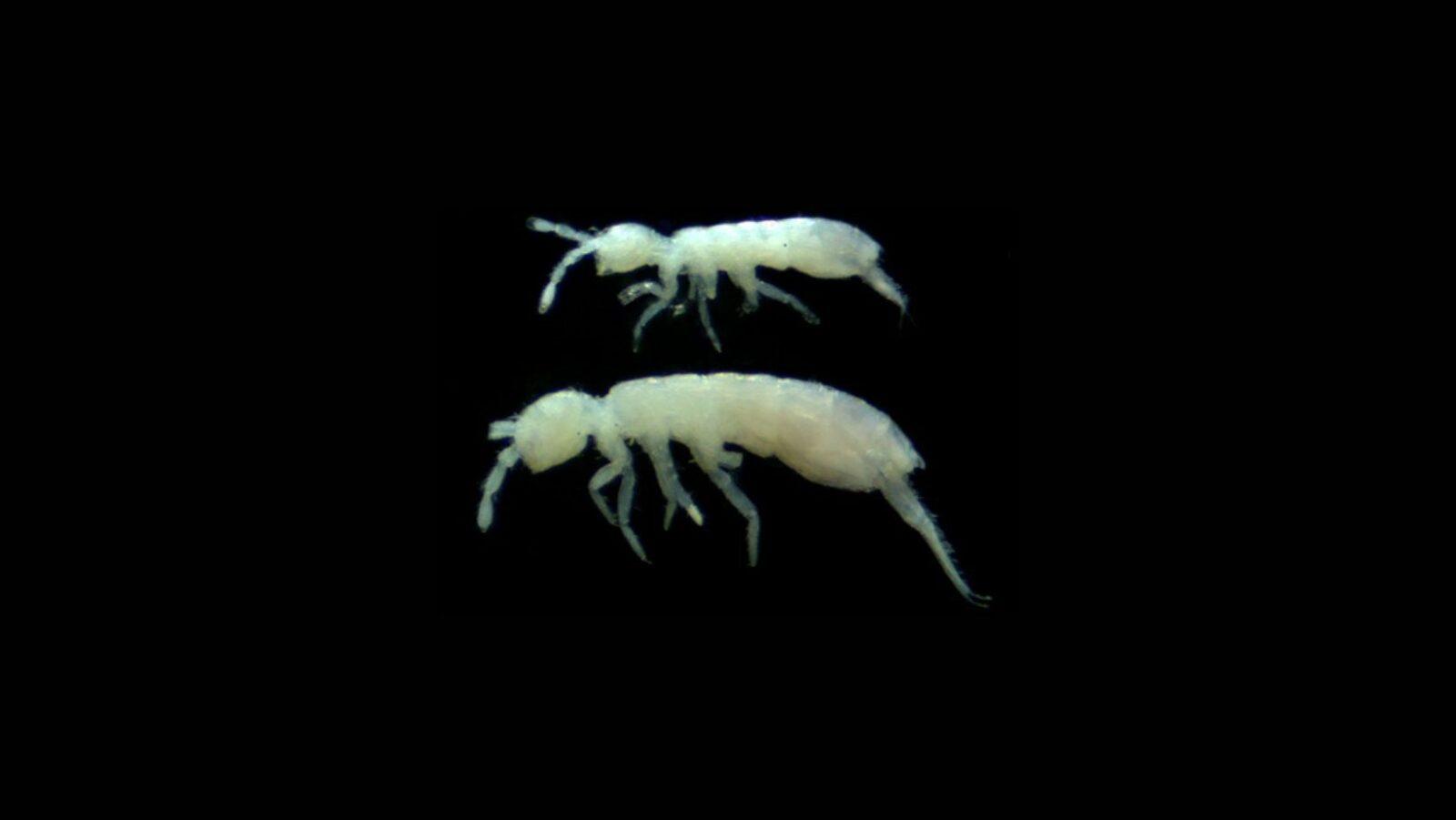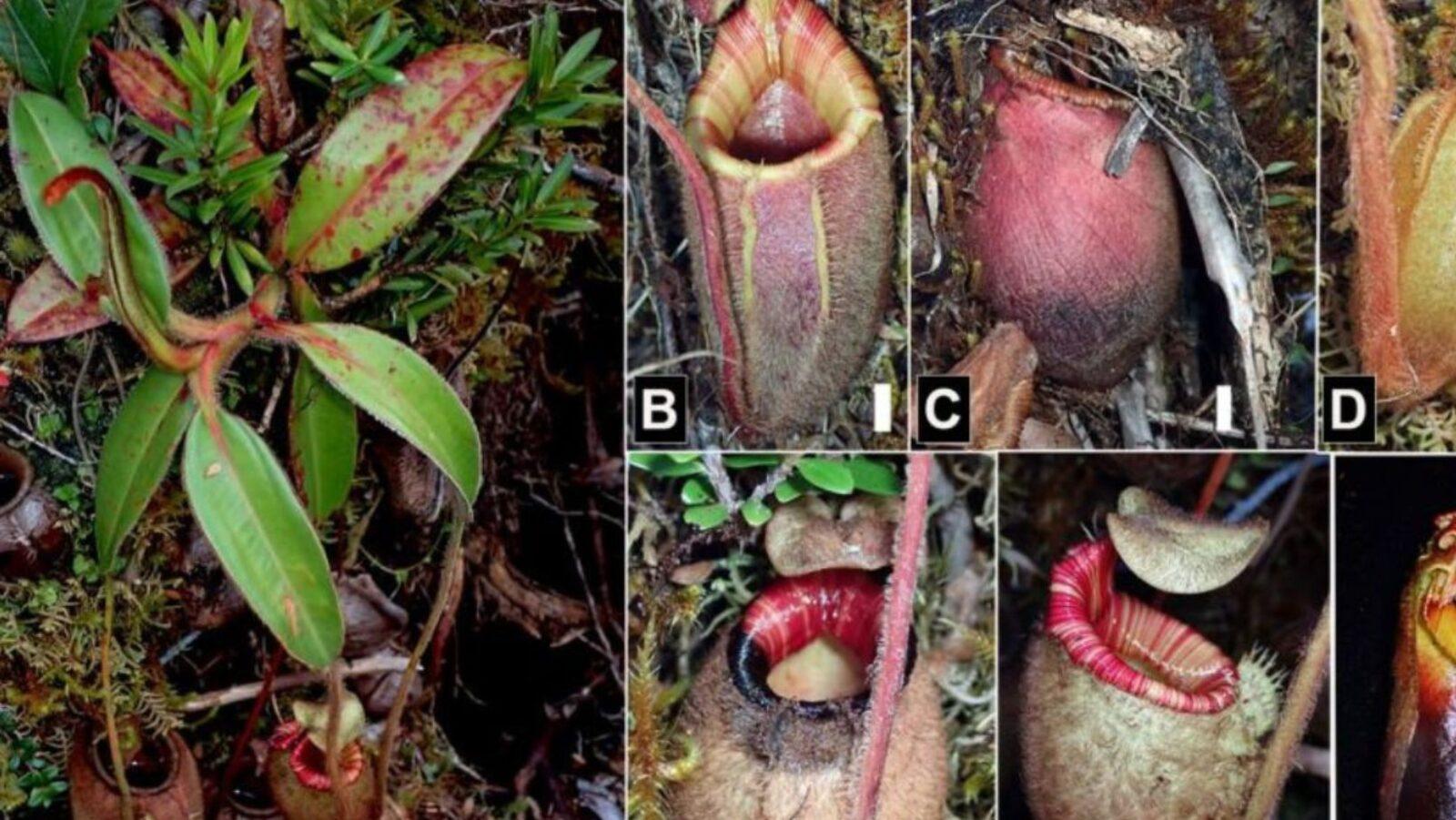
In May 2024, the Asian Blueberry Project announced the description of 3 new blueberry (Vaccinium) species from the Philippines, which were published in Phytotaxa.
𝙑𝙖𝙘𝙘𝙞𝙣𝙞𝙪𝙢 𝙛𝙖𝙡𝙡𝙖𝙭
Distribution/habitat: Mt. Apo Natural Park (MANP), Mindanao Island
Endemic: Yes
Distinctive traits: 𝘝. 𝘧𝘢𝘭𝘭𝘢𝘹 has only been spotted in MANP, where it occurs sympatrically (exists in the same overlapping geographic areas) and even grows side by side with a similar-looking 𝘝𝘢𝘤𝘤𝘪𝘯𝘪𝘶𝘮 species, 𝘝. 𝘮𝘺𝘳𝘵𝘰𝘪𝘥𝘦𝘴 (𝘝. 𝘧𝘢𝘭𝘭𝘢𝘹 has smaller leaves, dark pink or red petals, and shorter flower stalks or pedicels). 𝘝. 𝘧𝘢𝘭𝘭𝘢𝘹 has been observed to flower and fruit from March to August, and grows among sulfur vents and silica-rich rhyolite boulders near and at the summit. It was also found in a recently burned area on the mountain’s northern slope; this suggests that V. 𝘧𝘢𝘭𝘭𝘢𝘹 could be a pioneer species (a resilient organism that is the first to grow in or populate barren or recently disturbed environments) in areas disturbed by fire.
Conservation status: Critically Endangered; aside from its limited area coverage, it is under threat from increased tourism activities and man-made wildfires (despite its potential as a pioneer species).
Etymology: Due to its resemblance to 𝘝. 𝘮𝘺𝘳𝘵𝘰𝘪𝘥𝘦𝘴, it takes its name from the Latin word 𝘧𝘢𝘭𝘭𝘢𝘹 (“deceptive”).
𝙑𝙖𝙘𝙘𝙞𝙣𝙞𝙪𝙢 𝙜𝙖𝙢𝙖𝙮
Distribution/habitat: Mt. Hamiguitan Range Wildlife Sanctuary (MHRWS), Mindanao Island
Endemic: Yes
Distinctive traits: 𝘝. 𝘨𝘢𝘮𝘢𝘺 has smaller flowers and shorter pedicels than the sympatric species it closely resembles, 𝘝. 𝘨𝘪𝘵𝘪𝘯𝘨𝘦𝘯𝘴𝘦. These two plants are the only 𝘝𝘢𝘤𝘤𝘪𝘯𝘪𝘶𝘮 species in the Philippines that have “distinctly callose-thickened calyx lobes.” Found only in the lowland evergreen rainforest of the MHRWS,𝘝. 𝘨𝘢𝘮𝘢𝘺 grows in low-silica ultramafic soil on or near small areas that were cleared to serve as resting sites or view decks (𝘭𝘢𝘯𝘵𝘢𝘸𝘢𝘯). It has also been spotted in a 𝘕𝘦𝘱𝘦𝘯𝘵𝘩𝘦𝘴 (tropical pitcher plant) garden landslide area. The plant grows flowers in March and bears fruit in January.
Conservation status: Critically Endangered; less than 20 mature individuals were found within its limited range, and its existence is threatened by typhoons and other natural hazards.
Etymology: Because of its “relatively small and dainty flowers,” the researchers named it after the Cebuano word for “small” (𝘨𝘢𝘮𝘢𝘺).
𝙑𝙖𝙘𝙘𝙞𝙣𝙞𝙪𝙢 𝙫𝙤𝙢𝙞𝙘𝙪𝙢
Distribution/habitat: Mt. Kitanglad, Mindanao Island
Endemic: Yes
Distinctive traits: 𝘝. 𝘷𝘰𝘮𝘪𝘤𝘶𝘮 is the only known local 𝘝𝘢𝘤𝘤𝘪𝘯𝘪𝘶𝘮 species that has glands on the extreme end of its leaf blade base; according to researchers, 𝘝𝘢𝘤𝘤𝘪𝘯𝘪𝘶𝘮 plants may use these glands (which are usually some distance from the leaf stalk along the margin or spread throughout the length of the leaf margin) to attract pollinators. It grows in Mt. Kitanglad’s mossy, upper montane rainforest, bears flowers in September, and is physically similar to 𝘝. 𝘤𝘢𝘳𝘮𝘦𝘴𝘪𝘯𝘶𝘮 from the Mt. Tago Range.
Conservation status: Data Deficient
Etymology: In Latin, 𝘷𝘰𝘮𝘪𝘤𝘶𝘮 means “abscess” or “sore.” The researchers chose this name to highlight the conspicuous glands that make this species unique among Philippine 𝘝𝘢𝘤𝘤𝘪𝘯𝘪𝘶𝘮 plants.
This research effort was supported by Central Mindanao University’s Center for Biodiversity Research and Extension in Mindanao, Plant Discovery in the Southern Philippines field team, the Department of Environment and Natural Resources, and the indigenous people of Bagobo, Higaonon, and Talaandig. The discovery and description of these new blueberry species raises the total number of 𝘝𝘢𝘤𝘤𝘪𝘯𝘪𝘶𝘮 species in the Philippines to 44, 22 of which are in Mindanao (thereby making the island group the center of 𝘝𝘢𝘤𝘤𝘪𝘯𝘪𝘶𝘮 diversity in the country.—MF
Reference:
Author: Mikael Angelo Francisco
Bitten by the science writing bug, Mikael has years of writing and editorial experience under his belt. As the editor-in-chief of FlipScience, Mikael has sworn to help make science more fun and interesting for geeky readers and casual audiences alike.






